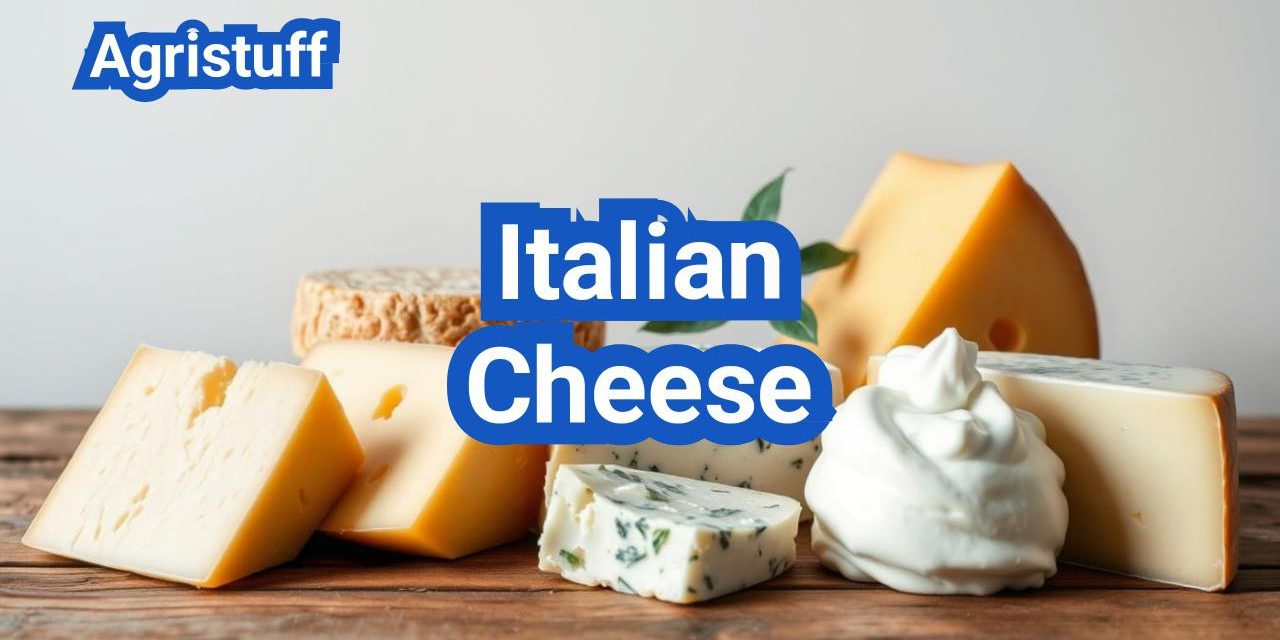The world of Italian cheeses is vast and diverse, offering a wide range of flavors and textures that can elevate any dish. From the nutty, granular taste of Parmigiano Reggiano to the sharp, salty flavor of Pecorino Romano, each Italian cheese has its unique characteristics and uses.
Choosing the right Italian cheese can be daunting, given the numerous options available. This guide aims to simplify the process by exploring the different types of Italian cheeses and their ideal applications in cooking.
Key Takeaways
- Understand the different types of Italian cheeses and their flavor profiles.
- Learn how to choose the right cheese for your pasta dishes.
- Discover the unique characteristics of Parmigiano Reggiano and Pecorino Romano.
- Explore the various uses of Italian cheeses in cooking.
- Get tips on how to pair Italian cheeses with other ingredients.
The Rich Heritage of Italian Cheese
Italian cheese production boasts a heritage that’s both complex and fascinating. With a history that spans centuries, Italian cheese has become an integral part of the country’s culinary identity.
Italy’s Cheese-Making Tradition
The tradition of cheese-making in Italy dates back to ancient times, with various regions developing their unique methods and recipes. The production of cheese was initially driven by the need to preserve milk, but over time, it evolved into an art form. Italian cheese types are incredibly diverse, ranging from soft and fresh cheeses to hard and aged varieties.
One of the key factors that contribute to the richness of Italian cheese is the DOP (Denominazione di Origine Protetta) certification, which ensures that cheeses are produced according to traditional methods and within specific geographical areas. This certification is part of the broader European cheese labeling system, designed to protect the names of regional cheeses and promote their unique characteristics.
Regional Diversity in Italian Cheese Production
Italy is home to a wide variety of cheeses, each with its own distinct flavor profile and production methods. The production regions of Parmigiano Reggiano and Pecorino Romano are exemplary of this diversity. Parmigiano Reggiano, produced in the Emilia-Romagna and Lombardy regions, is renowned for its granular texture and nutty flavor, making it a staple in Italian cuisine.
Pecorino Romano, on the other hand, is produced in the Lazio region and is known for its sharp, salty flavor. It is often used to add depth to various dishes. The regional diversity in Italian cheese production is a testament to the country’s rich agricultural heritage and the variety of kinds of Italian cheese available.
Understanding Italian Cheese Types

Understanding Italian cheese involves exploring the different categories based on texture, aging, and milk source. Italian cheese is incredibly diverse, with each region offering its unique varieties.
Classification by Texture and Aging
Italian cheeses are often categorized by their texture and aging process. Hard cheeses, such as Parmigiano Reggiano and Pecorino Romano, are aged for a long time, giving them a granular texture and a rich, intense flavor. These cheeses are often grated over pasta dishes or served as a table cheese.
Semi-soft and soft cheeses, like Mozzarella di Bufala and Burrata, have a higher moisture content and are typically consumed fresh or within a short period. Their creamy texture makes them ideal for pizzas and caprese salads.
Classification by Milk Source
The type of milk used is another crucial factor in classifying Italian cheeses. Cow’s milk cheeses, such as Grana Padano and Asiago, are popular for their rich flavor profiles. Sheep’s milk cheeses, like Pecorino Romano, offer a distinct tanginess, while goat’s milk cheeses provide a unique flavor and are often less common.
Some Italian cheeses are made from a blend of milks, creating complex and nuanced flavors. For instance, certain varieties of Robiola cheese can be made from cow’s, goat’s, or a combination of milks, offering a range of flavors from mild to robust.
Quality Designations and Certifications
PDO, PGI, and DOP are certifications that signify the authenticity and quality of Italian cheeses. These designations are crucial for consumers who want to ensure they are purchasing genuine Italian products.
PDO vs PGI Explained
The Protected Designation of Origin (PDO) and Protected Geographical Indication (PGI) are two European Union quality labels. PDO is reserved for products that are produced, processed, and prepared within a specific geographical area, following traditional methods. PGI, on the other hand, requires a geographical link to the product at least at one stage of production, processing, or preparation.
For Italian cheese, PDO is particularly significant as it ensures that the cheese is made according to traditional practices within a defined region. For example, Parmigiano Reggiano is a PDO-certified cheese, meaning it must be produced in the provinces of Parma and Reggio Emilia.
DOP Certification for Authentic Italian Cheeses
DOP stands for “Denominazione di Origine Protetta,” which is the Italian equivalent of PDO. It’s a certification that guarantees the cheese is produced and processed according to traditional methods within a specific geographical area. DOP certification is a mark of authenticity and quality, ensuring that the cheese meets strict production standards.
Many renowned Italian cheeses, such as Parmigiano Reggiano and Mozzarella di Bufala Campana, carry the DOP certification, signifying their adherence to traditional production methods and geographical origin.
European Cheese Labeling Systems
European cheese labeling systems are designed to provide consumers with information about the origin, quality, and characteristics of cheese products. Besides PDO and PGI, other labeling systems include organic labeling and nutritional information. These labels help consumers make informed choices when purchasing Italian cheese.
Understanding these labeling systems is essential for appreciating the quality and authenticity of Italian cheese. Whether you’re purchasing Parmigiano Reggiano or Gorgonzola, looking for the PDO or DOP label ensures you’re getting a high-quality, authentic product.
Famous Hard Italian Cheeses

The world of Italian cheese is vast, but hard cheeses like Parmigiano Reggiano and Pecorino Romano are particularly celebrated. These cheeses are not only staples in Italian cuisine but also highly sought after worldwide for their rich flavors and versatile uses in cooking.
Parmigiano Reggiano: The King of Cheeses
Parmigiano Reggiano, often referred to as the “King of Cheeses,” is a granular cheese with a rich, sharp flavor that develops over time. Produced exclusively in the provinces of Parma and Reggio Emilia, this cheese is made from cow’s milk and aged for a minimum of 12 months, with some varieties aged for 24 months or more. The aging process contributes to its crumbly texture and intense flavor, making it a favorite among chefs and home cooks alike.
Some key characteristics of Parmigiano Reggiano include:
- Aged for a minimum of 12 months
- Produced in specific regions of Italy
- Granular texture
- Rich, sharp flavor
Grana Padano: Parmigiano’s Accessible Cousin
Grana Padano is another well-known Italian hard cheese that, while similar to Parmigiano Reggiano, has its own distinct characteristics. It is produced in a larger area, including parts of Lombardy, Veneto, and other regions, making it slightly more accessible in terms of production volume. Grana Padano is also made from cow’s milk and aged, though typically for a shorter period than Parmigiano Reggiano, resulting in a milder flavor.
The main differences between Grana Padano and Parmigiano Reggiano are:
- Production area: Grana Padano is produced in a larger region.
- Aging time: Generally shorter than Parmigiano Reggiano.
- Flavor: Milder than Parmigiano Reggiano.
Pecorino Romano: The Bold Sheep’s Milk Cheese
Pecorino Romano stands out among Italian hard cheeses for its bold, salty flavor and is made from sheep’s milk. Originating from the countryside outside Rome, this cheese has been a staple in Italian cuisine for centuries. Its sharp, tangy taste makes it a favorite for grating over pasta dishes and salads.
Pecorino Toscano and Regional Variations
Pecorino Toscano is another variety of Pecorino cheese, produced in Tuscany. While it shares some similarities with Pecorino Romano, such as being made from sheep’s milk, it has a milder flavor profile. The regional variations in Pecorino cheeses highlight the diversity within Italian cheese production, with different regions offering their own unique takes on traditional cheeses.
Some notable regional variations include:
- Pecorino Sardo from Sardinia
- Pecorino Siciliano from Sicily
Semi-Soft Italian Cheese Varieties
Semi-soft Italian cheeses offer a versatile range of flavors and textures, perfect for various culinary applications. These cheeses bridge the gap between hard, aged varieties and soft, fresh ones, providing a unique gastronomic experience.
Asiago: From Fresh to Aged
Asiago is a semi-soft cheese originating from the Veneto region. It is made from cow’s milk and can be found in both fresh and aged forms. Fresh Asiago, typically aged for about 3-4 months, has a mild, slightly sweet flavor and a smooth texture. Aged Asiago, on the other hand, is aged for longer periods, developing a sharper, nuttier taste.
Provolone Valpadana: Mild to Sharp
Provolone Valpadana is another prominent semi-soft Italian cheese, known for its versatility. It is produced using cow’s milk and can range from mild and smooth when young to sharp and tangy when aged. The aging process significantly affects its flavor profile, making it suitable for a variety of dishes, from sandwiches to pasta.
Fontina and Similar Alpine Cheeses
Fontina, originating from the Aosta Valley, is a mild, nutty semi-soft cheese made from cow’s milk. It is often used in fondue and as a table cheese. Other Alpine cheeses share similar characteristics, with rich, creamy textures and flavors that reflect their mountainous origins.
| Cheese | Milk Source | Aging Period | Flavor Profile |
|---|---|---|---|
| Asiago (Fresh) | Cow | 3-4 months | Mild, slightly sweet |
| Asiago (Aged) | Cow | 6-12 months | Sharp, nutty |
| Provolone Valpadana (Young) | Cow | 2-3 months | Mild, smooth |
| Provolone Valpadana (Aged) | Cow | 6 months+ | Sharp, tangy |
| Fontina | Cow | 3-4 months | Mild, nutty |
Fresh and Soft Italian Cheeses

The world of Italian cheese is vast, with fresh and soft cheeses being a highlight of Italian gastronomy. These cheeses are characterized by their high moisture content and mild flavors, making them versatile ingredients in various Italian dishes.
Mozzarella di Bufala Campana
Mozzarella di Bufala Campana is a protected designation of origin (PDO) cheese made from the milk of water buffalo raised in specific areas of Italy, primarily in Campania. Its production is strictly regulated, ensuring a high-quality product with a unique taste and texture. This cheese is a staple in Italian cuisine, particularly for pizzas and caprese salads.
Burrata: Cream-Filled Luxury
Burrata is a type of fresh Italian cheese that consists of a mozzarella shell filled with shredded stracciatella and cream. Originating from Puglia, Burrata has gained popularity worldwide for its rich, creamy interior and delicate outer layer. It’s typically served fresh, often accompanied by tomatoes or bread.
Mascarpone and Other Creamy Varieties
Mascarpone is a triple-cream cheese known for its rich, buttery texture and mild flavor. It’s used in various Italian desserts, such as tiramisù, and can also be served as a dessert cheese, often with fruit or cocoa powder. Other creamy Italian cheeses include Stracchino and Crescenza, which are also known for their soft textures and mild flavors.
| Cheese Name | Milk Source | Texture | Typical Use |
|---|---|---|---|
| Mozzarella di Bufala | Water Buffalo | Soft, Elastic | Pizza, Caprese Salad |
| Burrata | Cow | Soft Shell, Creamy Filling | Appetizer, Salad |
| Mascarpone | Cow | Creamy, Soft | Desserts, Cheese Plate |
These fresh and soft Italian cheeses not only showcase the diversity of Italian dairy products but also highlight the country’s rich culinary traditions. Whether used in cooking or served on their own, they bring a unique flavor and texture to the table.
Exploring Italian Blue Cheese
From the creamy Gorgonzola Dolce to the spicy Gorgonzola Piccante, Italian blue cheese offers a diverse palette of flavors. Italian blue cheeses are known for their distinctive veining and robust flavors, making them a favorite among cheese enthusiasts.
Gorgonzola Dolce: Sweet and Creamy
Gorgonzola Dolce is a type of Italian blue cheese known for its sweet and creamy profile. It is made from cow’s milk and aged for about three to four months, which gives it a milder flavor compared to its counterpart, Gorgonzola Piccante.
Characteristics: Creamy texture, mild blue veining, sweet flavor.
Gorgonzola Piccante: Bold and Spicy
Gorgonzola Piccante, on the other hand, is aged for a longer period, typically around four to six months. This extended aging process gives it a stronger, more pronounced flavor and a crumbly texture.
Flavor Profile: Sharp, tangy, with a noticeable blue cheese kick.
Lesser-Known Italian Blue Varieties
While Gorgonzola is the most well-known Italian blue cheese, there are other varieties worth exploring. These include Franche Comté, although not exclusively Italian, and other local blue cheeses that offer unique flavor profiles.
| Cheese Type | Milk Source | Aging Period | Flavor Profile |
|---|---|---|---|
| Gorgonzola Dolce | Cow | 3-4 months | Sweet, creamy |
| Gorgonzola Piccante | Cow | 4-6 months | Sharp, tangy |
| Franche Comté | Cow | 4-6 months | Nutty, slightly sweet |
Italian blue cheeses are versatile and can be used in various dishes, from salads and pasta to being a standalone cheese board feature. Their robust flavors make them a great addition to many recipes.
Washed-Rind and Aromatic Italian Cheeses

The world of Italian cheese includes a fascinating category known as washed-rind and aromatic cheeses. These cheeses are characterized by their strong aromas and distinctive flavors, developed through a specific aging process involving regular washing of the rind.
Taleggio: The Aromatic Classic
Taleggio is one of the most well-known washed-rind Italian cheeses. Originating from the Lombardy region, it is made from cow’s milk and aged in caves, where it is regularly washed to develop its characteristic orange rind and strong aroma. Taleggio cheese is known for its creamy texture and fruity flavors, making it a favorite among cheese enthusiasts.
Robiola and Other Soft-Ripened Varieties
Robiola is another Italian cheese that falls under the category of washed-rind and aromatic cheeses. This cheese can be made from cow’s, sheep’s, or goat’s milk, or a combination thereof. Robiola cheese is soft-ripened and has a mild, creamy flavor with a white rind. Its aroma is less intense than Taleggio, but it still offers a rich sensory experience.
La Tur and Mixed-Milk Specialties
La Tur is a mixed-milk cheese from the Piedmont region, known for its creamy texture and delicate flavor. While not as strongly aromatic as some other washed-rind cheeses, La Tur cheese offers a unique taste experience with its blend of cow’s, sheep’s, and goat’s milk. It represents the diversity within Italian washed-rind cheeses, showcasing the variety of milk sources and production methods.
Washed-rind and aromatic Italian cheeses like Taleggio, Robiola, and La Tur offer a rich world of flavors and textures for cheese lovers to explore. Whether you’re a seasoned aficionado or just discovering these varieties, they provide a unique culinary experience that highlights the diversity and richness of Italian cheese-making traditions.
The Art of Italian Cheese Aging

Aging Italian cheese is a nuanced process that requires patience, skill, and a deep understanding of how flavors develop over time. The aging process significantly impacts the final flavor and texture of the cheese, making it a crucial step in cheese production.
How Aging Affects Flavor and Texture
The aging process involves allowing the cheese to mature over a period, during which enzymes break down the fats and proteins, developing the cheese’s characteristic flavor and texture. For instance, Parmigiano Reggiano, a well-known Italian cheese, is aged for a minimum of 12 months, resulting in its distinctive granular texture and sharp, nutty flavor.
Aging Classifications and Terminology
Italian cheeses are often classified based on their aging period into categories such as:
- Fresco: Fresh, aged for a short period.
- Vecchio: Aged, typically for 6-12 months.
- Stagionato: Aged for a longer period, often over a year.
Understanding these classifications helps in selecting the right cheese based on personal preferences for flavor and texture.
Choosing Based on Aging Preferences
When choosing an Italian cheese, consider your preference for flavor intensity and texture. For example, if you prefer a milder flavor, a younger cheese like Mozzarella might be suitable. For a stronger flavor, opt for an aged cheese like Pecorino Romano.
| Cheese Type | Aging Period | Flavor Profile |
|---|---|---|
| Mozzarella | Fresh | Mild, creamy |
| Parmigiano Reggiano | 12-36 months | Sharp, nutty |
| Pecorino Romano | 5-8 months | Sharp, salty |
By understanding the aging process and classifications, you can make informed choices that suit your taste preferences, enhancing your appreciation of Italian cheese.
How to Store Italian Cheese Properly

To enjoy Italian cheese at its best, understanding how to store it properly is essential. Proper storage maintains the cheese’s texture, flavor, and overall quality, ensuring that each variety can be savored as intended.
Storage Methods for Different Cheese Types
Different Italian cheeses have unique storage requirements. Hard cheeses like Parmigiano Reggiano can be stored for longer periods and require less stringent conditions compared to soft cheeses like Mozzarella or Burrata.
For hard cheeses, a cool, dry place is often sufficient. Soft cheeses, on the other hand, need to be kept in the refrigerator, often in a sealed container to prevent drying out or absorbing odors from other foods.
Proper Wrapping Techniques
Wrapping Italian cheese correctly is crucial for maintaining its freshness. For most cheeses, wrapping in wax paper or parchment paper is recommended, as these materials allow the cheese to breathe while protecting it from drying out.
For soft cheeses, an additional layer of plastic wrap can help prevent moisture loss. However, it’s essential not to wrap the cheese too tightly, as this can cause it to sweat and develop off-flavors.
Temperature and Humidity Considerations
Temperature and humidity are critical factors in storing Italian cheese. Most cheeses are best stored at a consistent refrigerator temperature between 39°F and 46°F (4°C and 8°C).
The humidity level is also important, particularly for aged cheeses. A humid environment helps maintain the cheese’s texture. For very dry environments, using a humidifier or storing the cheese in a covered container with a damp cloth can help maintain the necessary humidity.
By following these storage guidelines, you can enjoy your Italian cheese at its best, preserving its unique characteristics and flavors.
Creating the Perfect Italian Cheese Board

The perfect Italian cheese board is a symphony of flavors and textures, carefully curated to delight the palate. Crafting such a board requires an understanding of how different cheeses, wines, and accompaniments work together in harmony.
Balance of Flavors and Textures
A well-rounded Italian cheese board should include a variety of cheeses that differ in texture and flavor profile. This can be achieved by selecting a mix of soft, semi-soft, and hard cheeses.
- Soft cheeses like Mozzarella di Bufala and Burrata add creamy textures.
- Semi-soft cheeses such as Asiago and Provolone Valpadana provide a smooth, approachable element.
- Hard cheeses, including Parmigiano Reggiano and Grana Padano, offer robust, granular textures and intense flavors.
Recommended Cheese Combinations
Selecting the right combination of cheeses is crucial. A good starting point is to choose cheeses from different regions of Italy to showcase the country’s diverse cheese-making traditions.
| Cheese Type | Region | Characteristics |
|---|---|---|
| Parmigiano Reggiano | Emilia-Romagna | Granular, aged, nutty |
| Mozzarella di Bufala | Campania | Soft, creamy, mild |
| Gorgonzola Dolce | Lombardy | Soft, blue, sweet, creamy |
Pairing with Italian Wines and Accompaniments
Pairing cheeses with the right wines and accompaniments can elevate the cheese board experience. For instance, a robust Pecorino Romano pairs well with a crisp white wine like Pinot Grigio, while a creamy Burrata is complemented by the sweetness of fresh figs.
When selecting accompaniments, consider items that complement the flavors and textures of the cheeses. Fresh fruits, nuts, and artisanal jams are excellent choices.
Best Italian Cheeses for Pasta and Cooking

The world of Italian cheese is vast, with numerous varieties that can enhance pasta and cooking. Italian cheese is a fundamental component of many traditional dishes, offering a range of flavors and textures that can elevate your culinary creations.
Ideal Cheeses for Different Pasta Dishes
Different pasta dishes call for different types of cheese. For instance, Parmigiano Reggiano is a staple for many pasta recipes due to its nutty, slightly sweet flavor that complements a variety of sauces. It’s particularly well-suited for dishes like Spaghetti Carbonara and Lasagna.
- Pecorino Romano: Ideal for pasta dishes with robust flavors, such as Cacio e Pepe.
- Gorgonzola: Adds a creamy, tangy flavor to pasta bakes and sauces.
- Mozzarella: Essential for pizzas and baked pasta dishes, providing a melted, gooey texture.
Cooking Properties and Applications
Understanding the cooking properties of Italian cheeses can help you choose the right variety for your dish. For example, hard cheeses like Parmigiano Reggiano and Grana Padano are excellent for grating over pasta, while softer cheeses like Mozzarella and Mascarpone are ideal for creamy sauces.
- Hard cheeses: Great for grating and adding depth to pasta dishes.
- Soft cheeses: Perfect for creating creamy sauces and bakes.
- Blue cheeses: Add a pungent flavor to pasta dishes and salads.
Substitution Guidelines for Hard-to-Find Varieties
Sometimes, you may find it challenging to locate specific Italian cheeses. In such cases, knowing suitable substitutes can be helpful. For instance, if you can’t find Pecorino Romano, you can substitute it with a combination of Parmesan and a salty cheese like Feta.
- If you can’t find Asiago, try using Fontina or Provolone as a substitute.
- For Gorgonzola, you can use other blue cheeses like Roquefort or Stilton as alternatives.
Finding Authentic Italian Cheese in the USA

The quest for authentic Italian cheese in America requires a discerning eye and knowledge of labels. As Italian cuisine continues to gain popularity worldwide, the demand for genuine Italian cheeses has increased, making it crucial for consumers to understand how to identify authentic products.
What to Look for on Labels
When searching for authentic Italian cheese, the label is a critical indicator of quality and origin. Look for the PDO (Protected Designation of Origin) or PGI (Protected Geographical Indication) labels, which are European Union certifications that ensure the cheese is produced according to traditional methods and within a specific geographical area.
For instance, Parmigiano Reggiano and Mozzarella di Bufala Campana are PDO-certified cheeses. These certifications are a guarantee of the cheese’s authenticity and adherence to traditional production methods.
| Certification | Description | Examples of Cheeses |
|---|---|---|
| PDO (Protected Designation of Origin) | Ensures the cheese is produced, processed, and prepared within a specific geographical area using traditional methods. | Parmigiano Reggiano, Mozzarella di Bufala Campana |
| PGI (Protected Geographical Indication) | Indicates a product has a specific quality or reputation tied to its geographical origin, but allows for more flexibility in production methods. | Gorgonzola, Asiago |
Reliable Retailers and Specialty Shops
Besides checking labels, purchasing from reliable retailers and specialty shops is another way to ensure you’re getting authentic Italian cheese. Stores that specialize in Italian products or have a strong cheese selection often have knowledgeable staff who can guide you in choosing authentic cheeses.
Some well-known retailers that import authentic Italian cheeses include gourmet food stores and high-end supermarkets. These retailers typically have direct relationships with Italian producers, ensuring the authenticity of their products.
Popular Brands and Importers
Several brands and importers specialize in bringing authentic Italian cheeses to the US market. Brands like BelGioioso and Importing companies such as Formaggio Kitchen are known for their commitment to quality and authenticity.
When shopping, look for products that clearly state their origin and type of milk used. This transparency is often a good indicator of the product’s authenticity.
Health Considerations and Dietary Aspects
The rich world of Italian cheese not only delights the palate but also presents several health and dietary considerations. As consumers become more health-conscious, understanding these aspects becomes crucial for enjoying Italian cheese while maintaining a balanced diet.
Lactose Content in Different Italian Cheeses
Italian cheeses vary significantly in their lactose content, primarily due to differences in production processes and aging times. Generally, harder, aged cheeses like Parmigiano Reggiano and Grana Padano have lower lactose levels because most of the lactose is consumed by bacteria during the aging process.
On the other hand, softer and fresher cheeses such as Mozzarella di Bufala and Mascarpone tend to have higher lactose content. For individuals with lactose intolerance, opting for aged cheeses or lactose-free alternatives can be a more comfortable choice.
| Cheese Type | Lactose Content | Aging Time |
|---|---|---|
| Parmigiano Reggiano | Low | 24-36 months |
| Mozzarella di Bufala | High | Fresh |
| Gorgonzola Dolce | Medium | 3-6 months |
Nutritional Profiles and Benefits
Italian cheese is not only a source of flavor but also provides several nutritional benefits. It is rich in protein, calcium, and vitamins like B12. For instance, a 100-gram serving of Parmigiano Reggiano contains about 35 grams of protein and 1200 mg of calcium, making it an excellent addition to a diet focused on bone health.
However, it’s also important to consider the fat content, particularly in richer cheeses like Mascarpone. Moderation is key to enjoying the nutritional benefits while minimizing the intake of saturated fats.
Alternatives for Dietary Restrictions
For those with dietary restrictions, there are several alternatives available. Lactose-free versions of popular cheeses are becoming more common, and plant-based alternatives made from nuts, soy, or coconut oil are also gaining popularity.
When choosing alternatives, it’s essential to consider the nutritional content and ingredient list to ensure they meet your dietary needs. Some plant-based cheeses, for example, can be high in sodium or additives, so reading labels carefully is advised.
By being mindful of these health considerations and dietary aspects, consumers can continue to enjoy the rich variety of Italian cheeses while catering to their individual health needs and preferences.
How to Taste Italian Cheese Like an Expert
Tasting Italian cheese is an art that requires patience, attention to detail, and a willingness to explore diverse flavors. To become proficient in this art, it’s essential to understand the process and techniques involved in evaluating Italian cheese.
The Five-Step Tasting Process
The process of tasting Italian cheese involves several steps that help in fully appreciating its qualities. Here’s a five-step guide to tasting Italian cheese like an expert:
- Visual Inspection: Begin by observing the cheese’s appearance. Note its color, texture, and any visible aging characteristics.
- Olfactory Evaluation: Smell the cheese to appreciate its aroma. The scent can range from mild and milky to strong and pungent.
- Tactile Assessment: Touch the cheese to understand its texture. Italian cheeses can be hard, soft, creamy, or crumbly.
- Taste: Take a small piece of the cheese and let it melt slightly in your mouth. Notice the flavors and how they evolve.
- Finish: Pay attention to the aftertaste or finish. A good Italian cheese will leave a pleasant lingering flavor.
Developing Your Palate for Different Varieties
Developing a refined palate for Italian cheese requires exposure to a variety of cheeses and a willingness to explore different flavors and textures. Start by sampling well-known varieties like Parmigiano Reggiano and Mozzarella, then gradually move on to less familiar types.
| Cheese Type | Flavor Profile | Texture |
|---|---|---|
| Parmigiano Reggiano | Nutty, fruity | Granular, crumbly |
| Mozzarella di Bufala | Mild, creamy | Soft, elastic |
| Gorgonzola | Tangy, slightly sweet | Creamy, veined with blue |
Descriptive Terminology for Cheese Flavors
Using the right terminology can enhance your ability to describe and appreciate the nuances of Italian cheese. Terms like fruity, nutty, earthy, and buttery can help in accurately describing the flavors encountered during tasting.
By following these guidelines and practicing the art of tasting, you can develop a sophisticated palate that appreciates the rich diversity of Italian cheese.
Embracing the World of Italian Cheese
Exploring the world of Italian cheese is a journey through rich flavors, diverse textures, and centuries-old traditions. This guide has provided a comprehensive overview of Italy’s renowned cheese varieties, from the hard, granular Parmigiano Reggiano to the soft, creamy Mozzarella di Bufala Campana.
As you continue to explore the world of Italian cheese, consider the various factors that contribute to its unique characteristics, such as milk source, aging processes, and regional production methods. By understanding these elements, you can enhance your appreciation for the craftsmanship and heritage behind each cheese.
Whether you’re a seasoned cheese enthusiast or just beginning to explore the world of Italian cheese, this guide serves as a valuable resource for discovering new favorites and perfecting your cheese-tasting skills. Embracing the diversity of Italian cheese will enrich your culinary experiences and deepen your connection to Italy’s rich gastronomic heritage.
FAQ
What is the difference between Parmigiano Reggiano and Grana Padano?
Parmigiano Reggiano and Grana Padano are both Italian hard cheeses, but they differ in their production regions, aging processes, and flavor profiles. Parmigiano Reggiano is produced exclusively in the provinces of Parma and Reggio Emilia, aged for a minimum of 12 months, and has a more granular texture and a nuttier flavor. Grana Padano, on the other hand, is produced in a larger region, aged for a minimum of 9 months, and has a milder flavor.
What does DOP certification mean for Italian cheese?
DOP (Denominazione di Origine Protetta) certification is a European Union designation that ensures the authenticity and quality of Italian cheese. It guarantees that the cheese is produced according to traditional methods and within a specific geographic region, adhering to strict production standards.
How do I store Italian cheese properly?
To store Italian cheese properly, wrap it tightly in plastic wrap or aluminum foil and keep it in the refrigerator at a consistent temperature between 39°F and 46°F (4°C and 8°C). For harder cheeses, you can also use a cheese keeper or a breathable container to maintain humidity.
What are the best Italian cheeses for pasta dishes?
Some of the best Italian cheeses for pasta dishes include Parmigiano Reggiano, Pecorino Romano, and Grana Padano. These hard cheeses are ideal for grating over pasta, adding depth and umami flavor to various dishes.
Can I find authentic Italian cheese in the USA?
Yes, you can find authentic Italian cheese in the USA by looking for specialty cheese shops, Italian markets, or well-stocked supermarkets that carry imported Italian cheeses. Be sure to check the labels for DOP or PDO certification to ensure authenticity.
How do I taste Italian cheese like an expert?
To taste Italian cheese like an expert, follow a five-step process: look, smell, touch, taste, and savor. Observe the cheese’s appearance, appreciate its aroma, assess its texture, taste a small piece, and finally, savor the flavors and aftertaste.
What is the difference between Mozzarella di Bufala and regular mozzarella?
Mozzarella di Bufala is a type of mozzarella cheese made from the milk of water buffalo, whereas regular mozzarella is often made from cow’s milk. Mozzarella di Bufala has a richer, creamier flavor and a softer texture, making it a premium choice for caprese salads and pizzas.
Are Italian cheeses lactose-free?
Italian cheeses are not entirely lactose-free, but many varieties have lower lactose levels due to the fermentation process. Hard cheeses like Parmigiano Reggiano and Pecorino Romano have very low lactose content, making them more suitable for those with lactose intolerance.
How do I create a well-balanced Italian cheese board?
To create a well-balanced Italian cheese board, select a variety of cheeses with different textures and flavors, such as hard, soft, and blue cheeses. Pair the cheeses with complementary accompaniments like cured meats, fruits, nuts, and crackers, and consider adding a few Italian wines to enhance the experience.
What are some popular Italian blue cheeses?
Some popular Italian blue cheeses include Gorgonzola Dolce and Gorgonzola Piccante. Gorgonzola Dolce is a sweeter, creamier variety, while Gorgonzola Piccante is bolder and more pungent. Other lesser-known Italian blue cheeses worth exploring include Grana Blu and Vacca Blu.
Conclusion of: Italian Cheese
Why italian cheese still sets the global standard
Few foods carry as much history, craft, and regional pride as italian cheese. From mountain-aged wheels to fresh, milky curds, Italy’s protected names and time-tested methods give you a reliable way to shop with confidence in the U.S. market, where labels can be confusing and copycats are common. The smartest first step is learning how Europe’s quality labels work and how they protect genuine products. EU guide to PDO/PGI quality labels
How PDO/DOP helps you pick authentic italian cheese
When a wheel bears the DOP (PDO) seal, it means that italian cheese followed a strict rulebook—origin of milk, cheesemaking steps, and aging all happen in the designated region under supervision. That seal is your shortcut to authenticity on U.S. shelves, especially for famous styles that have generic imitators. For deeper checks, you can search official GI registrations before you buy. What PDO/PGI means for shoppers
Parmigiano Reggiano: the benchmark hard italian cheese
Parmigiano Reggiano is the iconic italian cheese for deep umami, crystalline crunch, and a long, savory finish. Made with raw cow’s milk and natural cultures, wheels are aged a minimum of 12 months (commonly 24–36 months), and the rind shows dotted markings and a consortium stamp you can trust. Shave over salads, grate into broths and risotti, or nibble as a table cheese. Parmigiano Reggiano Consortium (official)
Grana Padano: gentler, versatile, value-friendly italian cheese
Grana Padano is a widely loved italian cheese with a slightly sweeter, milder profile than Parmigiano Reggiano. Produced across a larger zone and aged at least nine months (with “Riserva” at 20+ months), it’s superb for grating over pasta, finishing soups, and adding everyday depth without overpowering dishes. Grana Padano Consortium (official)
Pecorino Romano: bold, salty italian cheese built for punchy pasta
Pecorino Romano, made from sheep’s milk, is a hard, salty italian cheese that stands up to pepper, guanciale, and robust sauces. It’s aged from about five to eight months or longer, drying into an assertive grating cheese that defines Roman classics like cacio e pepe and amatriciana. Pecorino Romano Consortium (official)
Pecorino Toscano (and Sardo): softer sides of sheep’s-milk italian cheese
Prefer something gentler? Pecorino Toscano and Pecorino Sardo offer softer, buttery interpretations of italian cheese. Young wheels bring creamy, approachable flavors for snacking and sandwiches, while aged versions turn nutty and complex without the salinity of Romano. Pecorino Toscano Consortium (official)
Mozzarella di Bufala Campana: fresh, milky italian cheese
Mozzarella di Bufala Campana DOP is the original water-buffalo italian cheese—supple, tangy, and best enjoyed fresh. Add it to caprese, tear it over pizza at the end of baking, or pair with ripe peaches and prosciutto. Its protected name guarantees the milk, method, and territory. Mozzarella di Bufala Campana Consortium (official)
Gorgonzola: blue-veined italian cheese (dolce vs. piccante)
Gorgonzola DOP comes in two key forms of italian cheese: dolce (soft, creamy, gently sweet) and piccante (firmer, spicier, more intense). Melt it into polenta or risotto, crumble over salads, and pair with pears or honey to balance the blue’s tang. Gorgonzola Consortium (official)
Taleggio: washed-rind italian cheese with buttery tang
Taleggio DOP is a semisoft, washed-rind italian cheese with a thin orange rind and a custardy interior. Despite its aroma, flavor is mild and buttery with gentle tang, making it perfect on warm bread or melted over roasted vegetables and mushrooms. Consorzio Tutela Taleggio (official)
Asiago: fresh (Pressato) vs. aged (d’Allevo) italian cheese
Asiago DOP showcases two distinct experiences of italian cheese. Fresh Asiago (Pressato) is springy and mild for sandwiches and snacking, while aged Asiago (d’Allevo) ranges from Mezzano to Vecchio and Stravecchio, growing firmer and nuttier with time for grating or shaving. Asiago PDO (official)
Provolone Valpadana: mild vs. strong italian cheese for melting
Provolone Valpadana DOP is a stretched-curd italian cheese that runs from dolce (mild, youthful, excellent melt) to piccante (long-aged, robust, ideal for antipasti boards). Use dolce on panini and baked dishes; use piccante where you want a sharper accent. Provolone Valpadana Consortium (official)
Choosing italian cheese by milk type, texture, and age
Match italian cheese to the job by mapping milk and texture. Cow’s-milk cheeses (Parmigiano Reggiano, Grana Padano, Asiago, Provolone) lean nutty and versatile; sheep’s-milk (Pecorino Romano, Toscano, Sardo) brings a briny, savory punch; water-buffalo (Mozzarella di Bufala) is lush and tangy. Fresh and semisoft styles melt and spread; hard, aged wheels grate clean and finish dishes with intensity. How to read EU quality labels
Labeling in the U.S.: what “Parmesan” means vs. DOP italian cheese
In the U.S., “Parmesan” is a standardized term under FDA rules, not necessarily DOP “Parmigiano Reggiano.” Understanding that distinction keeps your italian cheese choices honest: DOP guarantees origin and method, while generic Parmesan can vary in production and flavor. FDA rule: 21 CFR §133.165 (Parmesan)
Nutrition & lactose in italian cheese
Because aging consumes lactose, many hard and matured italian cheese styles contain only trace amounts—often tolerated by lactose-sensitive consumers. Still, portions matter, and sodium can be high in some wheels. If you’re managing intolerance, start small and track your response. NIDDK overview on lactose intolerance
Storage & safety for italian cheese at home
Wrap hard and semisoft italian cheese in breathable paper (or change wrapping frequently) to prevent moisture buildup and off-flavors. If unexpected mold appears on a hard cheese, trim at least 1 inch around and below the spot; discard soft cheeses with unintended mold. Keep wedges cold but allow them to come to room temperature before serving. USDA FSIS: Mold on food guidance
Quick pairing ideas with italian cheese
Use the intensity of italian cheese to steer pairings: fresh mozzarella for caprese and Neapolitan-style pizza; Taleggio for roasted vegetables; Gorgonzola for steak sauces and polenta; Provolone dolce for panini; Pecorino Romano to finish bold Roman pastas; Parmigiano Reggiano to elevate broths, risotti, and salads. Provolone Valpadana pairing tips (official)
Smart U.S. shopping checklist for italian cheese
To buy with confidence: choose wedges you can inspect, prefer DOP seals and consortium marks, check aging statements (24 or 36 months for Parmigiano), buy from high-turnover counters, and read ingredient lists on pre-grated packs. With these habits, your italian cheese choices will be more consistent and flavorful. Recognize PDO on labels
Parmigiano vs. Grana Padano vs. Asiago: which italian cheese when?
Reach for Parmigiano Reggiano when you want maximum umami and a drier, crystalline grate; pick Grana Padano for a mellower, slightly sweeter profile and strong value; choose aged Asiago when you want a nuttier, less salty grating option. For snacking, young Asiago Pressato or Pecorino Toscano keep italian cheese friendly and approachable. Asiago PDO product overview
From blue to washed-rind: expanding your italian cheese toolkit
Beyond staples, rotate Gorgonzola dolce for creamy blue notes, Gorgonzola piccante for bite, Taleggio for washed-rind funk without harshness, and Provolone piccante for aged depth. Building this mix ensures your italian cheese board covers mild, medium, and bold styles for any menu. Gorgonzola styles and facts (official)
Final thought
Great italian cheese choices come from reading labels, trusting protected names, and matching flavor intensity to the dish. Start with a DOP hard grater (Parmigiano or Grana), a sheep’s-milk option (Pecorino), and a fresh mozzarella—then add a blue or washed-rind for range. These basics make every weeknight and special occasion taste distinctly, deliciously Italian. EU quality schemes: quick refresher
Sources & References
- European Commission: Geographical Indications (PDO/PGI) explained
- Parmigiano Reggiano Consortium (official)
- Grana Padano Consortium (official)
- Pecorino Romano Consortium (official)
- Pecorino Toscano Consortium (official)
- Gorgonzola Consortium (official)
- Consorzio Tutela Taleggio (official)
- Asiago PDO (official)
- Provolone Valpadana Consortium (official)
- FDA: 21 CFR §133.165 (Parmesan)
- NIDDK: Lactose intolerance
- USDA FSIS: Molds on food













